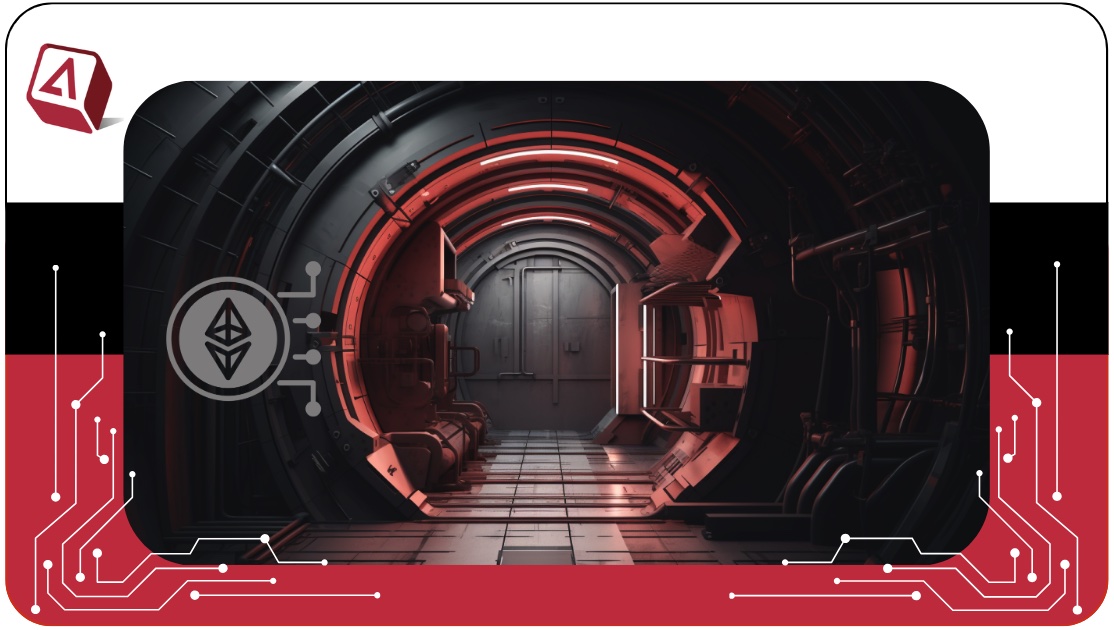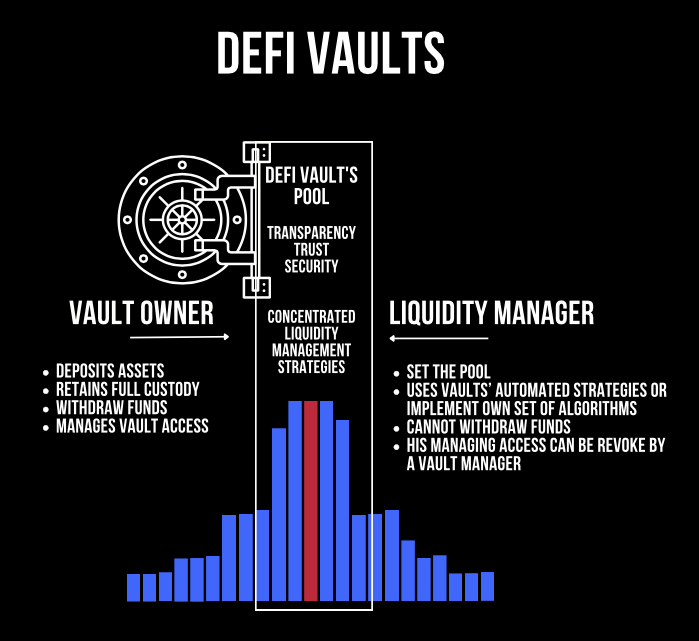Crypto Vaults: What are they, how do they work, and how can token issuers benefit?
This article explores the transformative role of crypto vaults in DeFi market making, addressing key concepts, benefits, and considerations for token issuers. From enhancing transparency and decentralization to mitigating counterparty risk, crypto vaults offer a revolutionary approach to liquidity management in the rapidly evolving DeFi landscape.
What are crypto vaults?
Vaults are among the most exciting innovations and DeFi developments for token issuers (Web3 companies and DAOs). The concept of vaults was a response to the need for secure and automated management of digital assets within the DeFi ecosystem. DeFi vaults are smart contracts designed to allocate and automatically manage token liquidity across decentralized exchanges (DEXes) with maximum capital efficiency.
Transparency and decentralization
The idea of vaults has emerged as a revolutionary approach to decentralized lending and borrowing. Since the cooperation model of liquidity providers with token projects has been mostly based on a token loan, this technology with an asset deposit solution solves trust, security, and 100% transparency issues in liquidity management across the DeFi protocols without intermediaries.
By combining the trust of blockchain technology in DeFi space with optimized and automated market making strategies, vaults offer individuals or token issuers a powerful tool. Automated Market Makers supported by vault’s solutions enable low-ranged liquidity adjustments across various decentralized platforms, like Uniswap or QuickSwap, and incorporate risk management protocols to mitigate impermanent losses.
Are crypto vaults safe? The difference between crypto vaults and traditional token loan model.
Utilizing crypto vaults addresses significant challenges associated with counterparty risk inherent in market-making models. In the conventional “loan with the call option” model, token projects face the threat of market makers’ company closure, failing to fulfill their obligations, or delaying the return of loans for some reason. This poses substantial risks to the project’s stability and integrity, particularly if the loan constitutes a significant portion of the total token supply. Using vaults, the project holds the tokens at all times.
Moreover, in scenarios where the borrowed tokens hold governance rights, granting market makers the authority to vote poses additional concerns, as their votes could significantly influence project decisions, potentially undermining the project’s decentralization ethos.
Vault contracts operate autonomously, eliminating the dependence on external parties and safeguarding token projects against these risks while ensuring the continuity of operations. By entrusting assets to vault contracts, token projects maintain full custody and control over their tokens, mitigating the risk of market makers defaulting on their obligations or exerting undue influence through voting rights. This ensures that tokens remain securely within the project ecosystem, preserving stability and minimizing external dependencies.
How do crypto vaults work?
Vaults are managed and operated by two roles: the Vault Owner (a token issuer) and the Liquidity Manager (could be a third-party market making company). Vault Owner deposits assets and retains full custody of the liquidity in the vault, with the ability to withdraw funds or revoke managing access from the Liquidity Manager at any time. Liquidity Manager uses vaults’ strategies to automatically adjust liquidity range on a DeFi platform, maintaining slippage and minimizing price volatility.
Liquidity Manager can customize strategies based on risk tolerance and financial goals, choosing between different risk levels, yield optimization strategies, and asset allocations. Vault-based trading strategies execute trades automatically, ensuring continuous liquidity provision without manual intervention.
When partnering with algorithmic market makers – they could take the role of Liquidity Manager and execute their own token tailored trading strategies based on predetermined parameters, such as market conditions, price movements, and trading volume.
How do I choose the best crypto vault provider?
What to look for in optimal liquidity management solutions? Take a look at key features in selecting the best crypto vault for token projects:
- The ability to choose a liquidity management strategy
- The availability for specific token pairs
- Built-in Automated Liquidity Management algorithms (ALM)
- Hedging strategies
- Access to the real-time liquidity dashboards
What are the benefits of using crypto vaults?
- Token projects do not have to lend tokens to market makers; they only give them rights to liquidity management. They can revoke this access at any time.
- By entrusting assets to vault contracts, token projects maintain full custody and control over their tokens, mitigating the risk of market makers defaulting on their obligations or exerting undue influence through voting rights (governance tokens).
- Only Vault Owner (token project) has the ability to withdraw funds.
- There is no monthly fee (no retainer). Token project only shares earned fees with Liquidity Manager – market making company.
- Active liquidity management – efficient usage of the token treasury to provide liquidity in pools. Strategies automatically move a narrow range around the current price to follow market changes. This solution does not burden the token treasury as in the case of passive liquidity and maintaining a wide range of liquidity in pools.
Summary
- Vault is a tool for managing digital assets’ liquidity within the DeFi ecosystem for individuals, Web3 companies, and DAOs.
- Vaults operate as secure and autonomous smart contracts, allowing users to deposit their crypto assets for liquidity management, executed without intermediaries.
- Vaults are equipped with complex algorithms and strategies that automatically allocate and manage the deposited assets across multi-DeFi protocols.
- The core feature of vaults is maximizing capital efficiency through active management of concentrated liquidity, unlike passive liquidity, which usually has a wide range.
- Vaults enhance transparency, security, and trust by reducing counterparty risk.
- The Vault Owner retains full custody of the liquidity in the vault, with the ability to withdraw funds and manage access for the Liquidity Manager.
At Empirica, we are developing our own vault solutions.
Schedule a call to find out how you can start using vaults for your projects.
Active management of concentrated liquidity
Piotr explains the difference between passive and active management of concentrated liquidity on DEX platforms based on examples from the most popular one: Uniswap V3. He demonstrates how to manage token liquidity with efficient use of capital achieving the same results with less burden on token project’s treasury. By watching the video, you can learn about key liquidity metrics like slippage and market depth. Understanding these metrics is vital for token projects, especially when it comes to how they impact their investors.
Enjoy the video!









